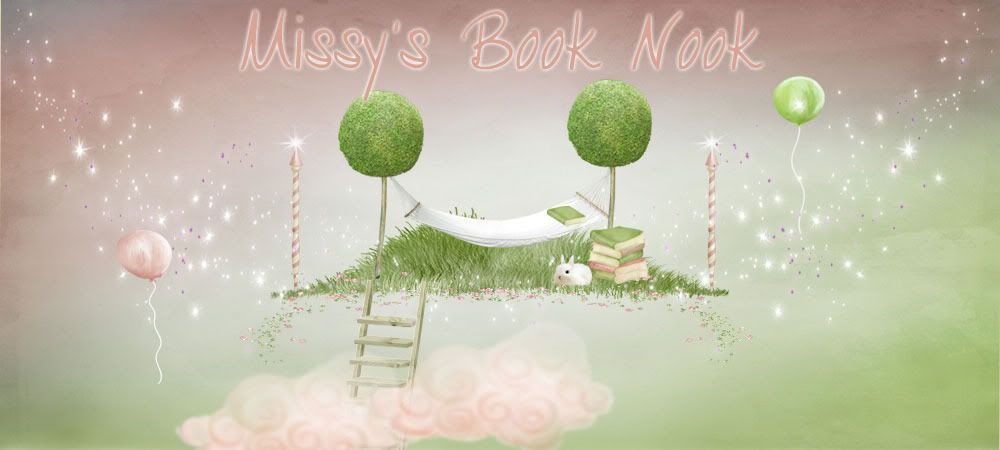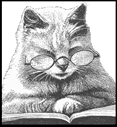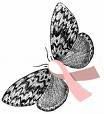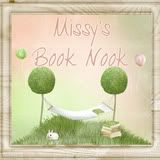
It's that time again! Time to spotlight an author from your local area, state, or places that you have lived previously. This is a monthly meme hosted by TIF TALKS BOOKS.
I have had the good fortune of getting to know Sherry Austin, author of several books; The Days Between The Years, Where The Woodbine Twines and Mariah of the Spirits and Other Southern Ghost Stories.
Sherry is a native of Charlotte, NC and now lives and writes in Flat Rock, in the Blue Ridge Mountains. I am hoping that Sherry and I will get to meet in person one of these days! Until then, we use Facebook to keep in touch!
And now....here is Sherry Austin:
Q. Tell us about your writing.
As you know, I operate on two tracks in my writing. One I call the “ghostly/gothic” and the other I call the “Trixie track.” THE DAYS BETWEEN THE YEARS is the first book on my Trixie track. Trixie Goforth is the little old lady character who dominates the book. People really responded to Trixie, calling her a joyful mess, and the right people encouraged me to continue with her so that’s what I’m doing right now. I have another novel about Trixie in the works. In DAYS, Trixie was her fun, full-of-it self, but there’s some bittersweetness. In her blog and on Facebook, Trixie is all fun, and that’s how you’ll find her in any stories about her in the future. She is most active and most appreciated on Facebook, so if you are on Facebook, friend Trixie. Be sure to take a look at her public profile first, though.
WHERE THE WOODBINE TWINES and MARIAH OF THE SPIRITS are my ghostly/gothic books. I also review books in the supernatural fiction genre for “Dead Reckonings,” which is a literary journal about dark fantasy. I recently reviewed Ellen Datlow’s anthology POE, and have reviewed books by and written a foreword for "weird fiction" writer Jonathan Thomas. I’ve written an entry for the ENCYCLOPEDIA OF THE VAMPIRE on the psychological vampire theme in the short story “Luella Miller” by nineteenth century fiction writer Mary Wilkins Freeman.
MARIAH OF THE SPIRITS, though essentially fiction, is based on some common and enduring folk motifs such as the vanishing hitchhiker legend. In the title story, Mariah is the ghost of a slave girl on an endless quest for home or wholeness, as is the roadside ghost in vanishing hitchhiker tales. I believe the hitchhiking ghost motif endures because it represents what we all know, on some level, that we're doing: journeying toward home. In several of the stories, I use African American deathlore motifs a lot. I also have stories based on the old man who wouldn’t die, the old woman who was dead and didn’t know it yet, and I use rituals like graveyard workday. The most popular story in that collection is “The Dressmaker’s Mannequin,” about a Civil War-era wooden mannequin made from a cypress tree. The tree spirit lives on in the mannequin, who ends up in an antique shop in New Orleans where a harlequin doll on the shelf above her teases her and taunts her about her love for the shopkeeper.
WHERE THE WOODBINE TWINES is the strangest of my three books, I guess. Though some people love it—like you, Missy, thanks!—and find it a fun read, others find it very unsettling. As you, Missy know, there’s nothing gruesome in it, but it leaves some people with a gritty feel. Southern gothic worthy of the name has this effect, but I think many people react to WOODBINE that way because they simply don’t get the ending. This surprised me. I find that more and more, readers want their endings all sewed up neatly, and WOODBINE very purposely does not do that for you. I cut my teeth on literature, both popular (such as Daphne DuMaurier and the short stories of Ray Bradbury) and “serious” (insert the name of any literary giant here), wherein hitting the reader over the head with “exactly what happens” at the end was considered tacky and insulting to the reader's intelligence.
I think it is partly due to the influence of TV, movies, and internet gaming that audiences today don’t want to think much. With WOODBINE, it would have been a travesty to end it any other way. What happened to Catherine Wiley at the end seems clear to me: she went to the place where the woodbine twines and within the story two descriptions of what that place or state of being is like are clearly stated. There’s also a very clear suggestion that Catherine is happy there: The narrator, Nan, notices a slight spring in Catherine’s step as Catherine retreats into her mysterious world.
Q. Was Catherine Wiley inspired by a real person?
Absolutely. She is a composite of two very real young women I once knew, and the book is dedicated to them. Both of them struggled with being different, though in very different ways from each other. They suffered all their lives because of their oddness. This disturbed me deeply, and at the risk of sounding too arty, I’ll say I had to work away my anguish over their anguish vicariously through Catherine’s in the story. I wanted readers to finish the story feeling a little unsettled by how we treat people not like us.
Q. And the character Nan, who is also the narrator?
The character or narrator who thinks and reflects, who tries to save the odd duck but fails, and who spends her life reflecting on that failure, is present in some form or another in everything I’ve written. That woman is basically me, though Nan’s life situation is nothing like mine.
Q. Why did you choose the South Carolina coast for the setting in WOODBINE?
I’ve always loved the atmosphere of crashing surf and live oak trees hanging with moss, the smell of salt air, swamp air, the way sandy coastal roads glow in the moonlight. I love the undercurrent of gothic mystery that runs just underground in the folklore of the Southern coast. I grew up in Charlotte, NC, and the coastal area of both Carolinas was three to four hours away, the “exotic next door.” I think most of us miss what I call “the strange and the strangely wonderful” that’s all around us or just down the road. For instance, you don’t have to take a trip to the pyramids of Egypt to see evidence of how another people in another time viewed death. It’s everywhere around us, we just don’t have eyes for it because we refuse to see or stop seeing what is close by or familiar to us, or we’re just not educated about it. I've seen Stonehenge, but it's not half as interesting as any old graveyard I've seen. It's just farther away! And, it is, of course, a whole lot older. The inscriptions and symbols on the stones in any old cemetery will wow you if you take the time to look and realize that you’re in an outdoor museum where you can find clues to the many ways humankind perceives the death journey. I went to the coast of the Carolinas a lot with my parents, and I never did the typical beach thing. I looked around me, and what I saw stirred my sense of wonder as much as anything I’ve seen in a foreign country. The geography was different from the Carolina piedmont, and as we neared the coast, we’d drive through the Green Swamp—an endless nothing, or so it seemed. Sandy roads ran perpendicular to the paved road, and those roads would go straight out through the woods all the way to the horizon. Very mysterious! Who lived along those roads? What did they do in such a place? How did they get there? I soon discovered that people who lived there were descendants of Portuguese pirates. The coastal culture was different, too, in some ways, from the culture in, say, Charlotte. About an hour inland from the beach, I’d notice the little concrete block houses with doors and windowsills painted blue. I learned that the people living in those areas descended from slaves and that their ancestors painted the entryways blue because they believed doing so kept out the spirits of the dead. Just that one observation—blue used as a means of keeping spirits away—took me so many places in my exploration of the many different ways we view death. Why blue? Blue is sometimes thought of as a spiritual color. But then why would blue be used to repel spirits? Wouldn’t it attract them? I never found the answer to that question, but it deepened my growing understanding of how fluid myth and belief are, how they change with time and with what we want to believe. I learned that the slaves had a practical reason for using blue, too: because many of the plantations grew indigo, they had ready access to the indigo blue dye. I love all the many ways people use what is at hand to try to make sense of the mysteries around them and to make some kind of peace with death. That's evident in everything I write, including the Trixie story, THE DAYS BETWEEN THE YEARS.
I saw my first bottle tree in that same flat, sparse, sandy region. Often, people who talk to me about my books mention bottle trees because they remember my use of one in the title story of MARIAH OF THE SPIRITS. I later learned that the slaves believed the multi-colored glass bottles would attract and trap ancestral spirits. They might paint their doors and windowsills blue and then strip a small tree of leaves and thread colored bottles on the limbs, as an extra measure of protection. I began to see bottle trees as the stained glass of everyday people. I’d always loved the idea of light streaming through cut or colored glass as a representation of the infinite and unknowable Something that we sense but never see: God or the Great Mystery. I love the idea that people who might never have seen a cathedral found a way to make their own stained glass with the ready material they had--glass bottles, a tree, and sunshine to make the glass magically glow and refract and glitter. Nothing interests me more than how people use what is at hand—in object and in idea—to express their sense of the transcendent and to try to see meaning in death. That’s where my interest in ghosts comes from. That’s why everything I’ve written so far has these elements woven throughout. In WOODBINE, the old tomb with the stained glass window in it is far more important in the story than it seems at first. In the stained glass window, which is called “Where the Woodbine Twines,” we find the most positive suggestion of what the place where the woodbine twines might mean.
~If you haven't read a novel by Sherry Austin, you are really missing out! Not only is she an outstanding NC author, she is a very sweet friend. Do yourself a favor and check out her books.
http://www.sherryaustin.com/
Thank you so much, Sherry for the interview!

















































































7 comments:
What a great interview!
Sherry Austin, "the gal who helps me out," says you're welcome, honey. We both thank you kindly.
Nice interview! I haven't read anything written by Sherry yet - I enjoyed the interview and will look into her. Since she has a website, I will start there.
Missy, you picked a " Winner " here! Sherry's books are Library Keepers! :O)
I do like gothic books. Fabulous interview. I shall add a couple of these to my TBR list.
I'm VERY intrigued by Where the Woodbine Twines . . . definitely going to be looking into that one!!! Thanks for the wonderful interview!!
For some reason I have missed until now that you live in NC. I do, too! That makes 4 I know for sure. Thanks for the interesting interview!
Post a Comment